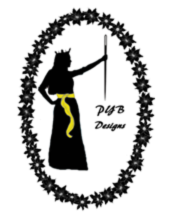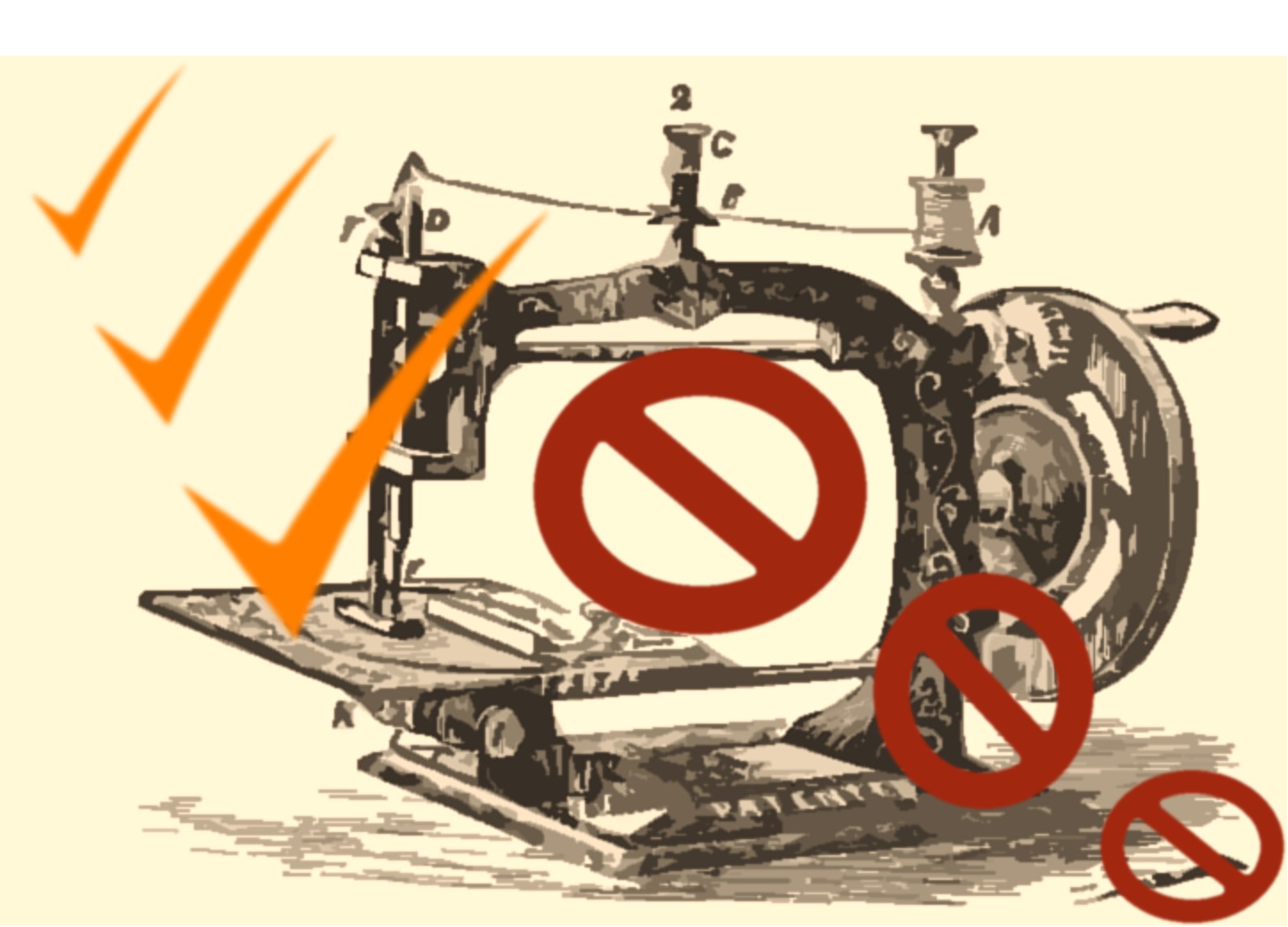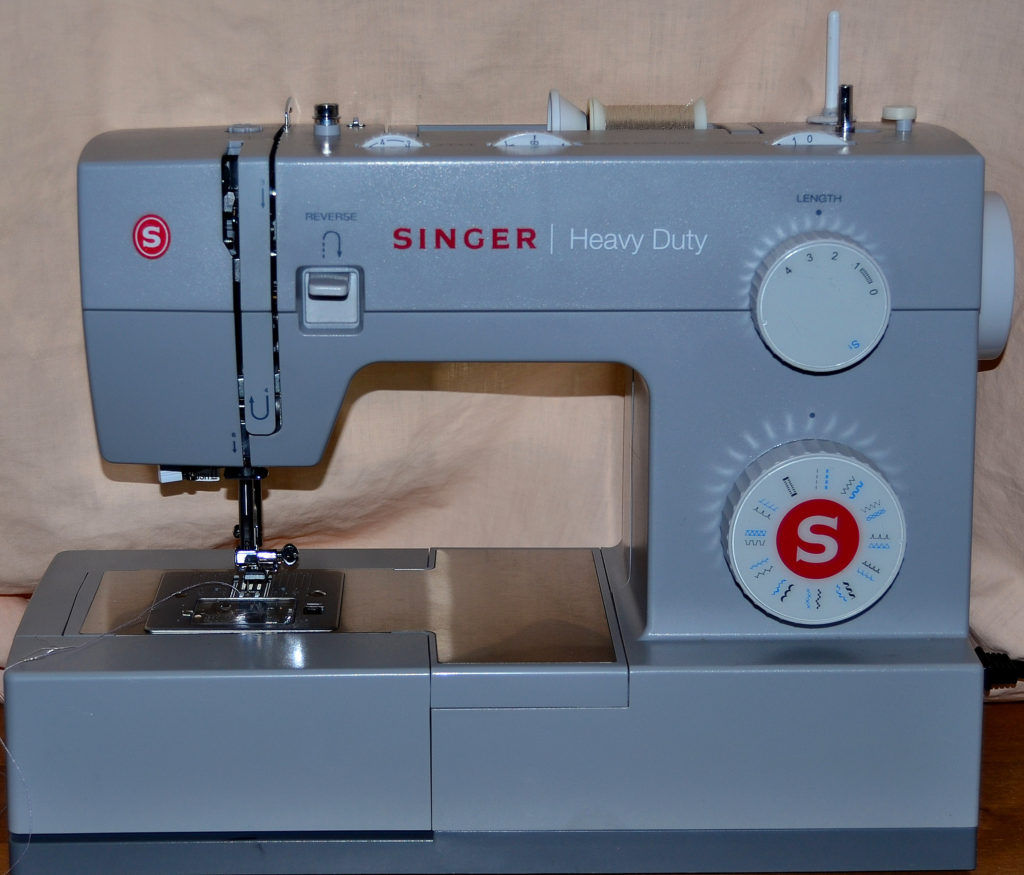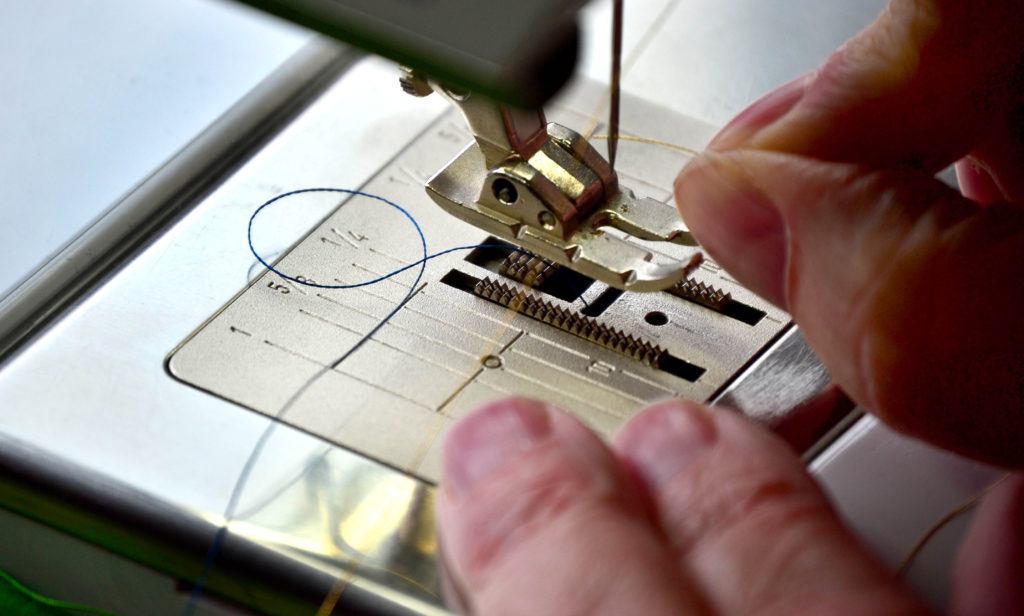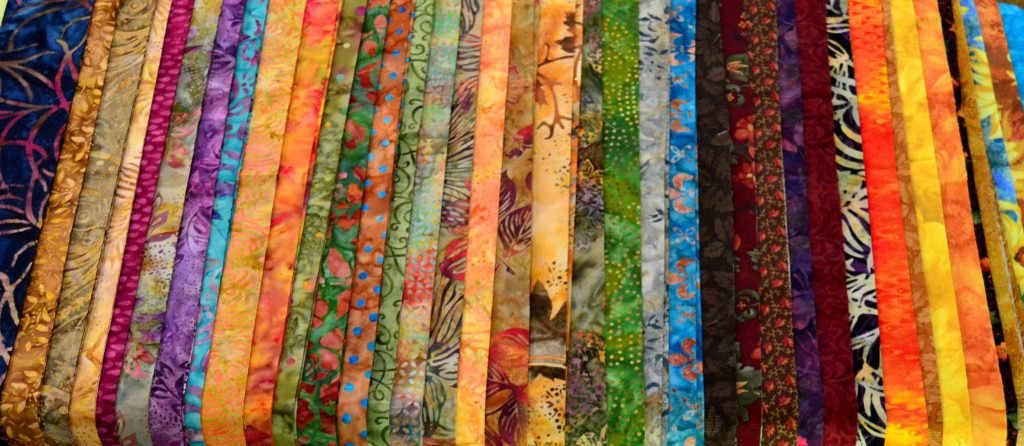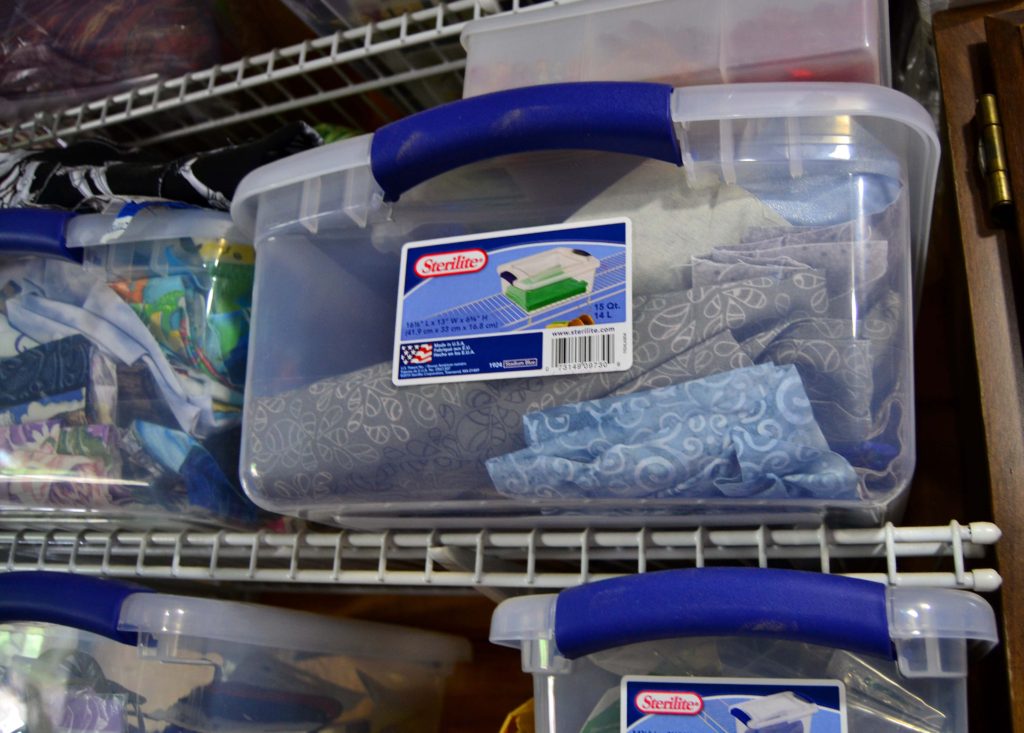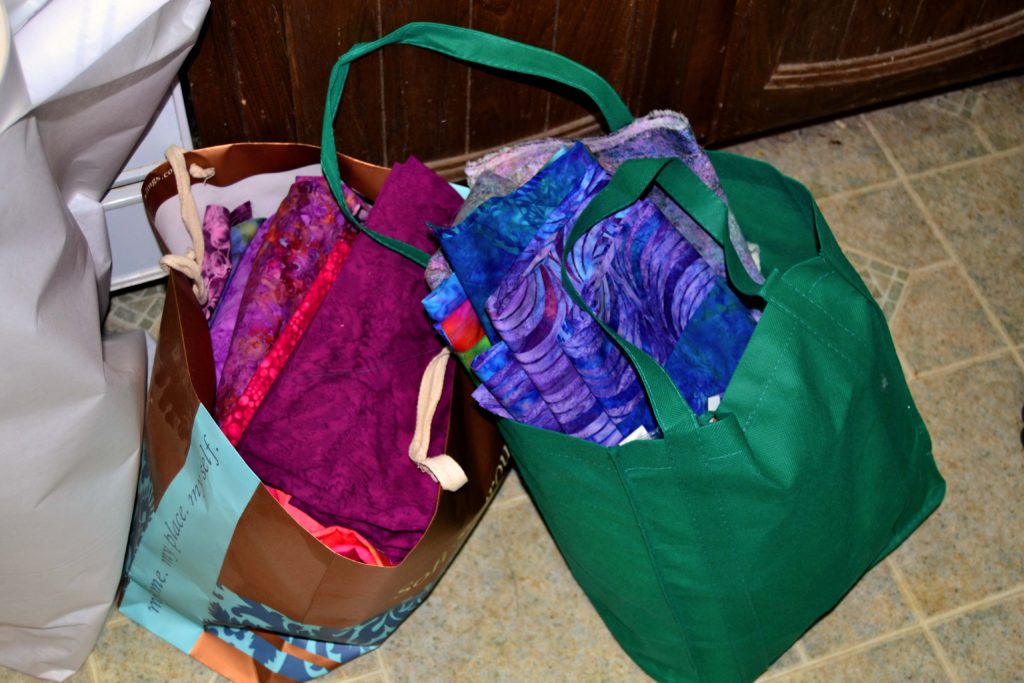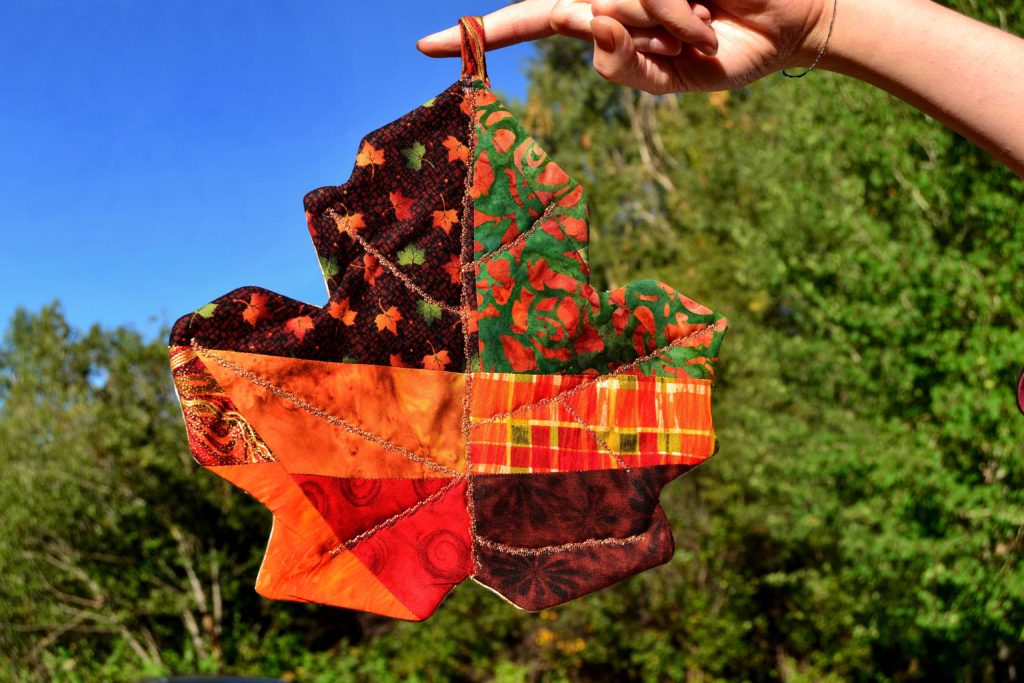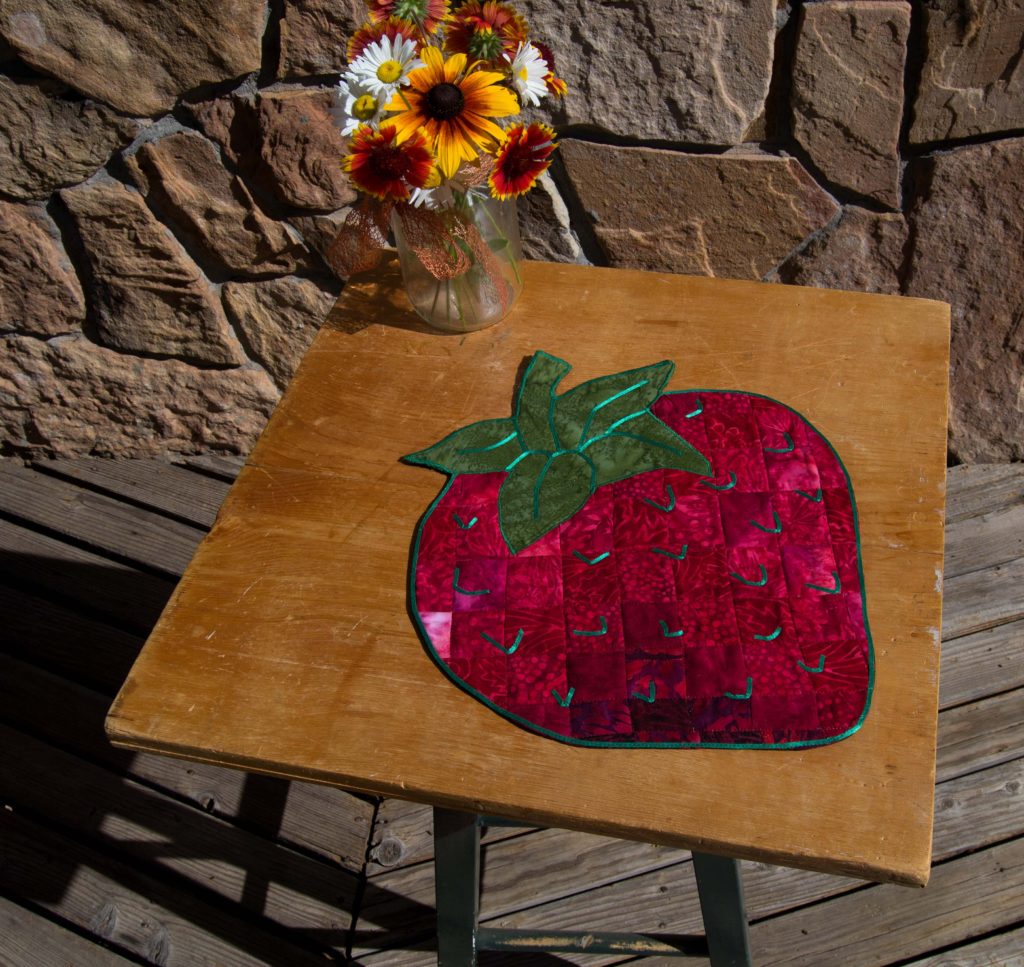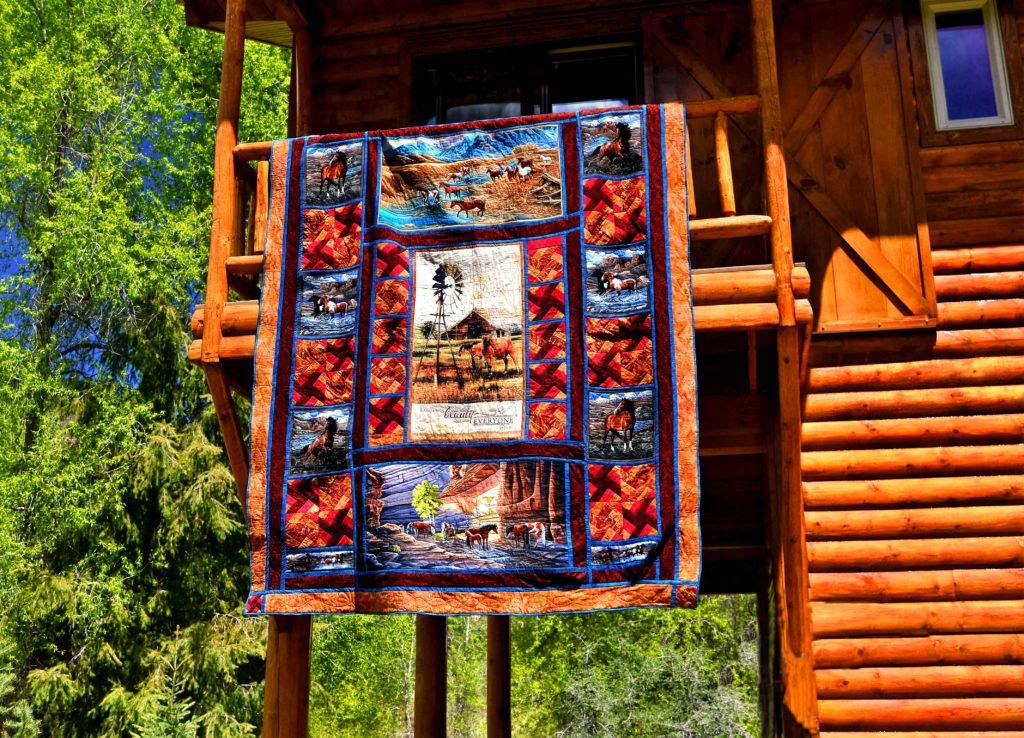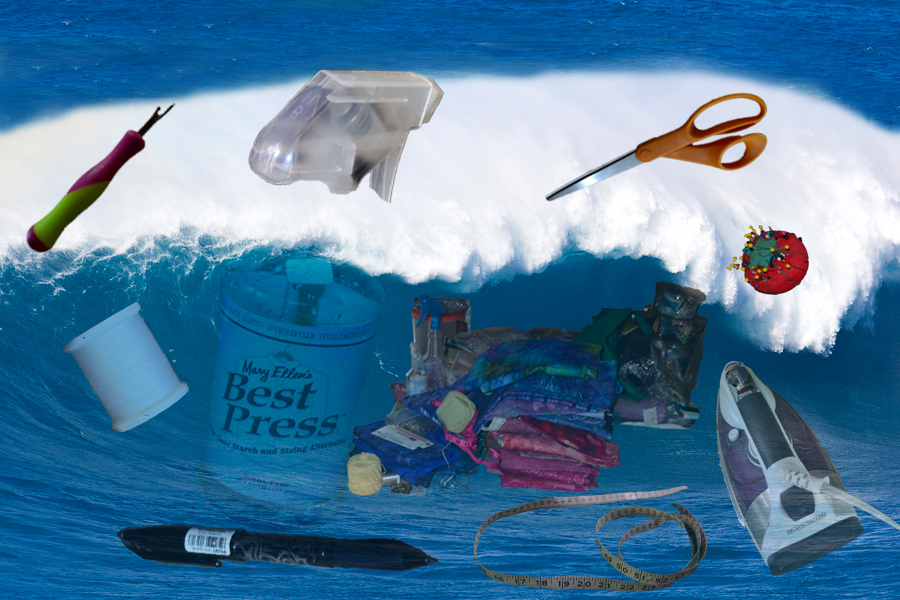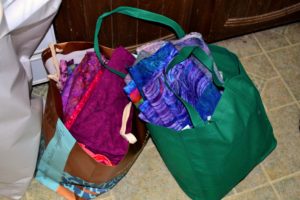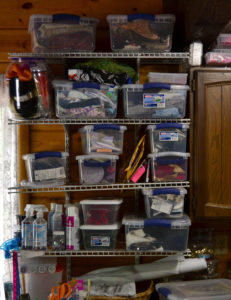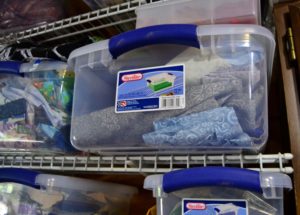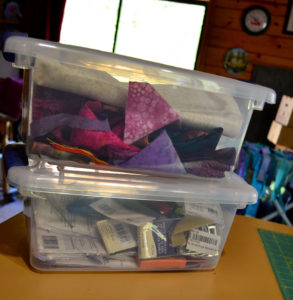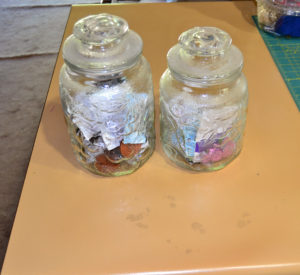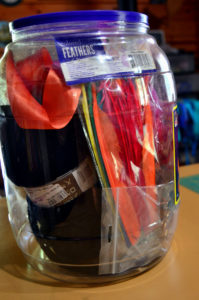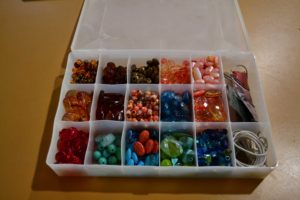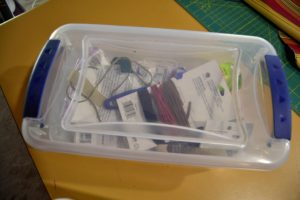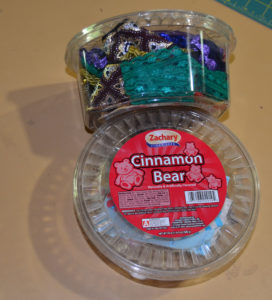
The sew-zone is any place that you use to do your sewing and create your wondrous works of art. It’s a place for Zen and peace, for relaxation and creativity, for insanity, frustration, chaos – and all the wonderful fruits of both an artist and a homemaker. It can also be a potentially dangerous place, filled with sharp implements and hidden hazards. Here’s a list of sewing safety tips that we hold dear at Princess YellowBelly, and will also help you keep your sew-zone inviolate from intruders!
When I was a little girl we lived in a tiny 700 sq. ft. house with 7 kids in the Northern Alberta bush country, right alongside the grizzly bears. Very “Little House on the Prairie” like, with all the accompanying “adventures” and hardships.
I learned a lot from those years in 700 square feet with 6 brothers and sisters, mostly from my mother.
My mom, who was a wizard at keeping this potential disaster whirling in a clockwise direction, carved out her very own sew-zone on the arm of the living room couch. This is where she worked constantly to keep us clothed, mended, and etc.

And even though we ran in age from new-born to pre-school, she had us so well trained in what we could and could not do in her sew-zone, that not one of us ever picked up a pin and stuck it in our mouths, or got injured in any way whatsoever! This was an achievement I took entirely for granted until I had my own ankle biters, and training them made me realize what a genius my mom had been all along.
So I’d like to pass on some accumulated wise sewing safety tips from both her and I, and hope it will help you out as you create your own zone.
Sew-Zone Do’s – Offensive Sewing Safety Tips
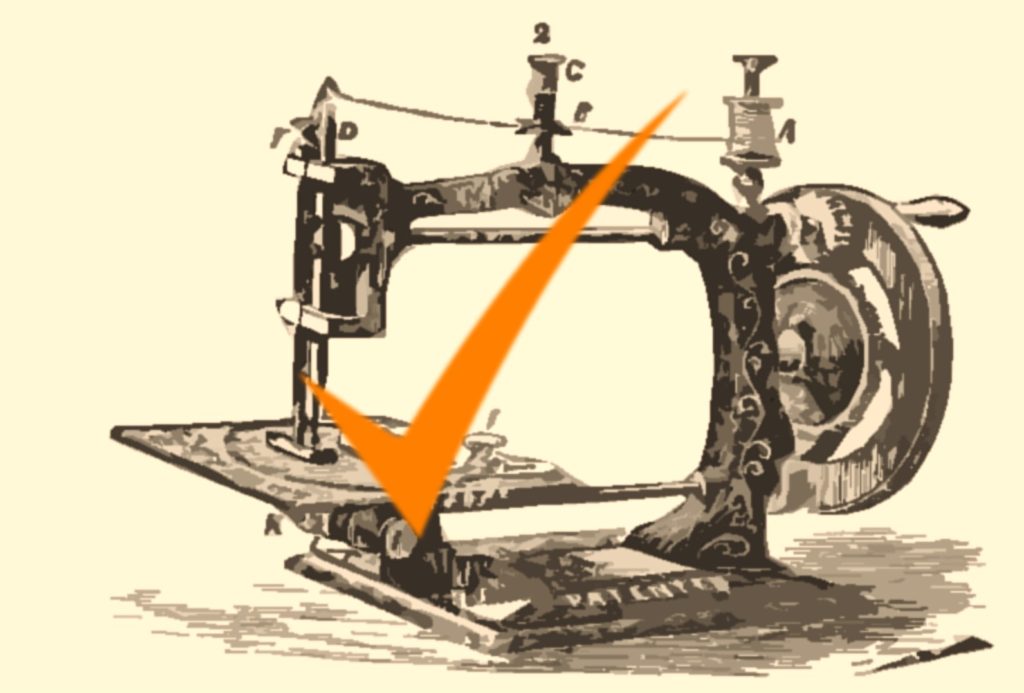
There are a few simple tips and tricks that you can and should do to carve out your sewing niche. This will help you to preserve your own space without irritating or frustrating others in your family, and will help to protect your sewing projects as well!
Create a Space
Look around your available space and find a place where you can set your sewing machine up permanently.
- My mom used the arm of the couch so that she wouldn’t have to move her machine and all her sewing paraphernalia at every meal and taught us to respect her space.
- I have used an antique office desk that Michael bought at an auction when we were first married. I have used this desk in almost every conceivable room in the different houses we have lived in, except the bathroom and back entryways!
- My friend Barb sews in a large coat closet and she has it so organized that it actually seems spacious and works beautifully.
It’s not the place you sew in that matters, as much as the space you carve out.
Organize!
Having everything organized so that you know where anything is at any given time is a huge time and frustration saver.
The first thing I do when I carve out a new zone for myself is decide where my ironing board will go in relation to my sewing machine. If I have the space, I like to leave my ironing board set up on my right side at a right angle to my sewing desk. This way, I can swing back and forth between the 2 without wasting any motion.
My sewing machine & sewing table is just to the side, closest to the window
Once the ironing board is situated, I think about:
- The most-used items I have…
- The storage containers I have…
- And the available space in my new sew-zone…
I try to organize so that I don’t have to actually get up all that often when I’m actually sewing in my zone – I like to be able to concentrate exclusively on what I’m doing.
Have a Strict Start-Up and Shut-Down Routine
This way you will always power up and shut down all your devices and tools in the same order and don’t have to think it through every time.
Turning your sewing machine on and off each time you sew will lengthen the light-bulb life but also insures that no busy little hands can make that needle go up and down when your back is turned.
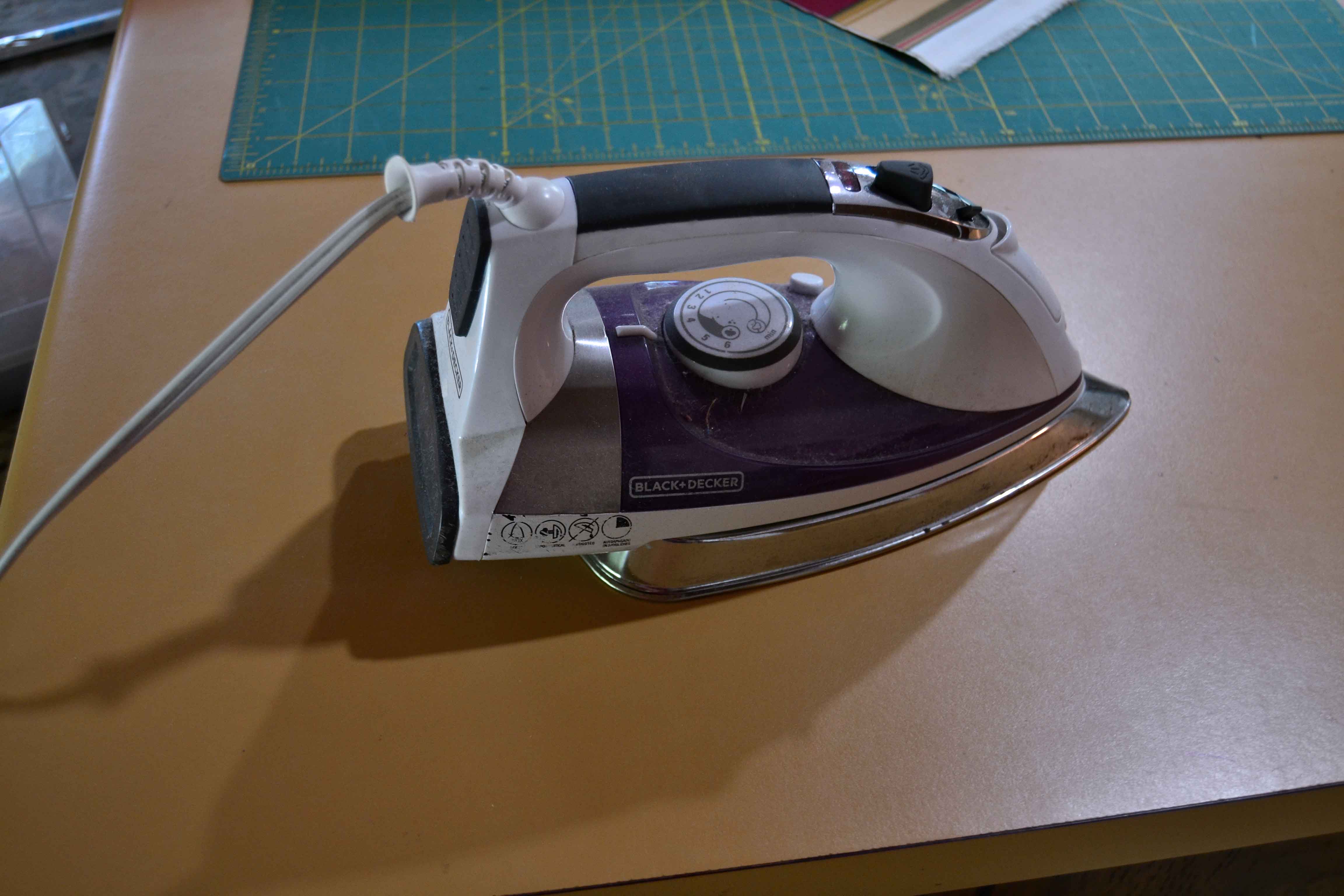
The same principle holds true with the iron. I know that they have automatic shut-offs now, but I don’t trust them! And, if your kids are even half as bright as mine, they love to push buttons and it will take them only minutes to learn how to switch that iron back on. Burns are a horrible thing, so ALWAYS unplug your iron when you’re finished sewing for the day – especially if you have small children!
Make and Enforce Rules about Space Invasion
Do this thoughtfully – for your peace of mind – but reasonably, so that both you and your family can live with it.
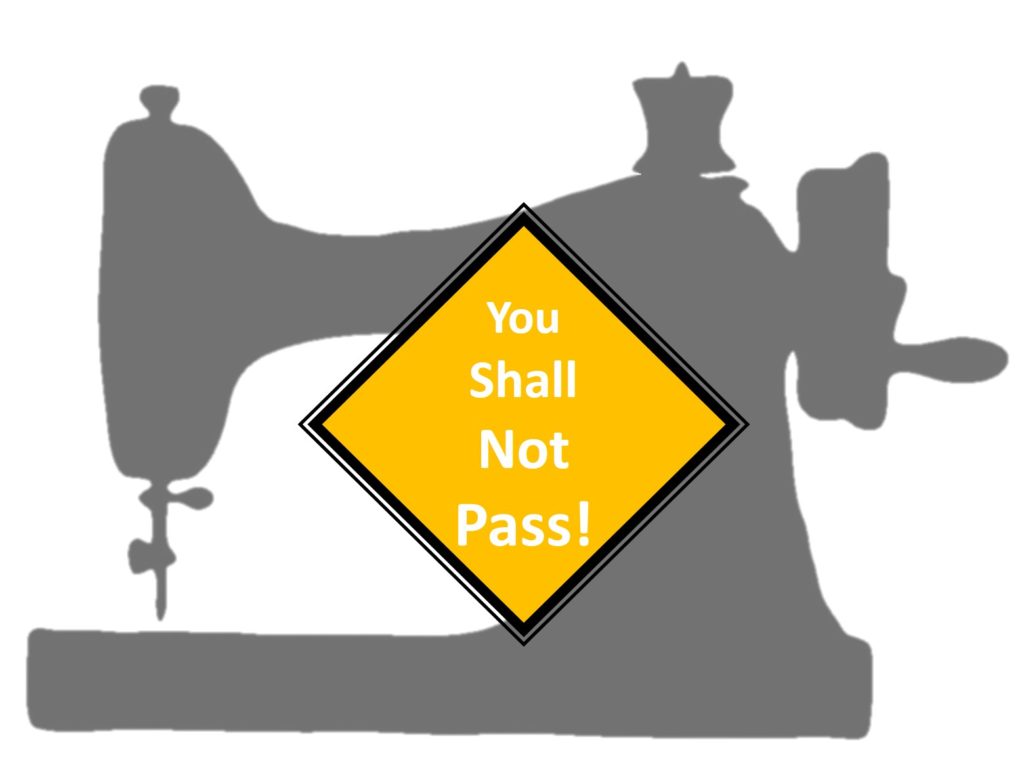
If you’ve got your own sewing room or closet (any space with a door that shuts) train your family to knock before entering. If you have to sew on the arm of the couch or the end of the table, make sure that no one touches your stuff without asking you first.
Trust me, a few sharp words will go a long ways towards preserving peace in the home when the option is discovering expensive tools missing, your sewing machine damaged, or something caught on fire, (worst case scenario). Plus, you never want to come back and find that a square which took you two-to-five hours to piece is stained with chocolate fingerprints.
Take Extra Care with Sharp Implements
If your sew-zone is in the living room there’s no way pins won’t end up on the carpet. Michael made me a pin catcher by gluing a magnet on the bottom of a long stick, and all I had to do was move it slowly over the carpet and – voila!
I taught the kids to do this and also to pick up any pin they found on their own and to give it to me. I rewarded them with a jelly bean per pin, so it was a fun game and they never got hurt either.
This is more important than slightly OCD-ish neatness, by the way.
Back in the day when I was teaching school, one of my students’ moms swallowed a pin.
Yes, a mom, not her kid – she had the pins in her mouth, was startled, gasped…and down the hatch that pointy little knife went. (Which is a good reason to leave your pins in the pincushion and not your mouth.)
The medical procedures and trauma that little mishap caused that poor lady emblazoned itself on my brain and I swore that I would make sure my kids knew NEVER to put those little knives in their mouths.
In the same vein, place all:
- Scissors…
- Seam rippers…
- Rotary cutters…
- Pins…
- And anything sharp…
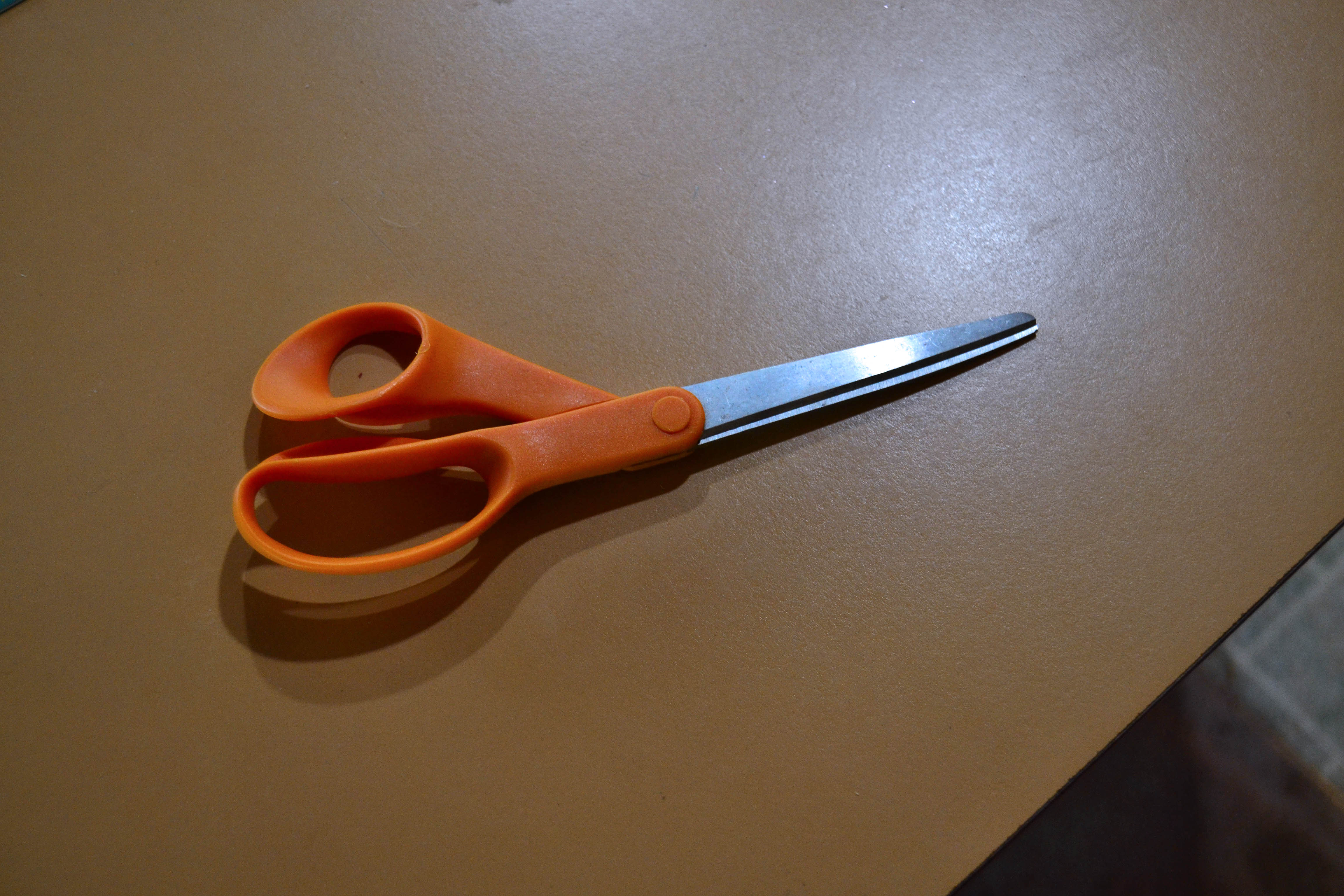
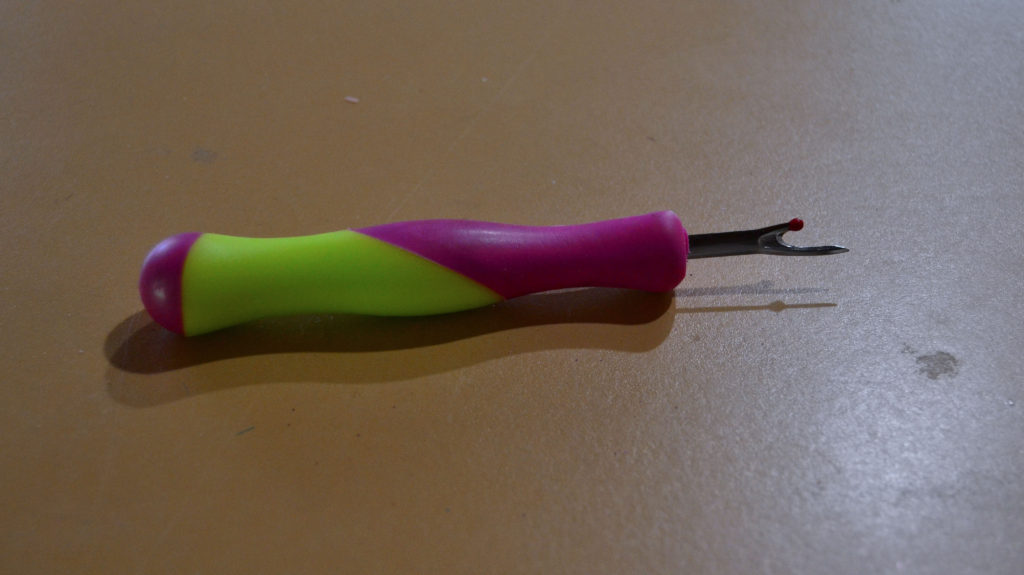
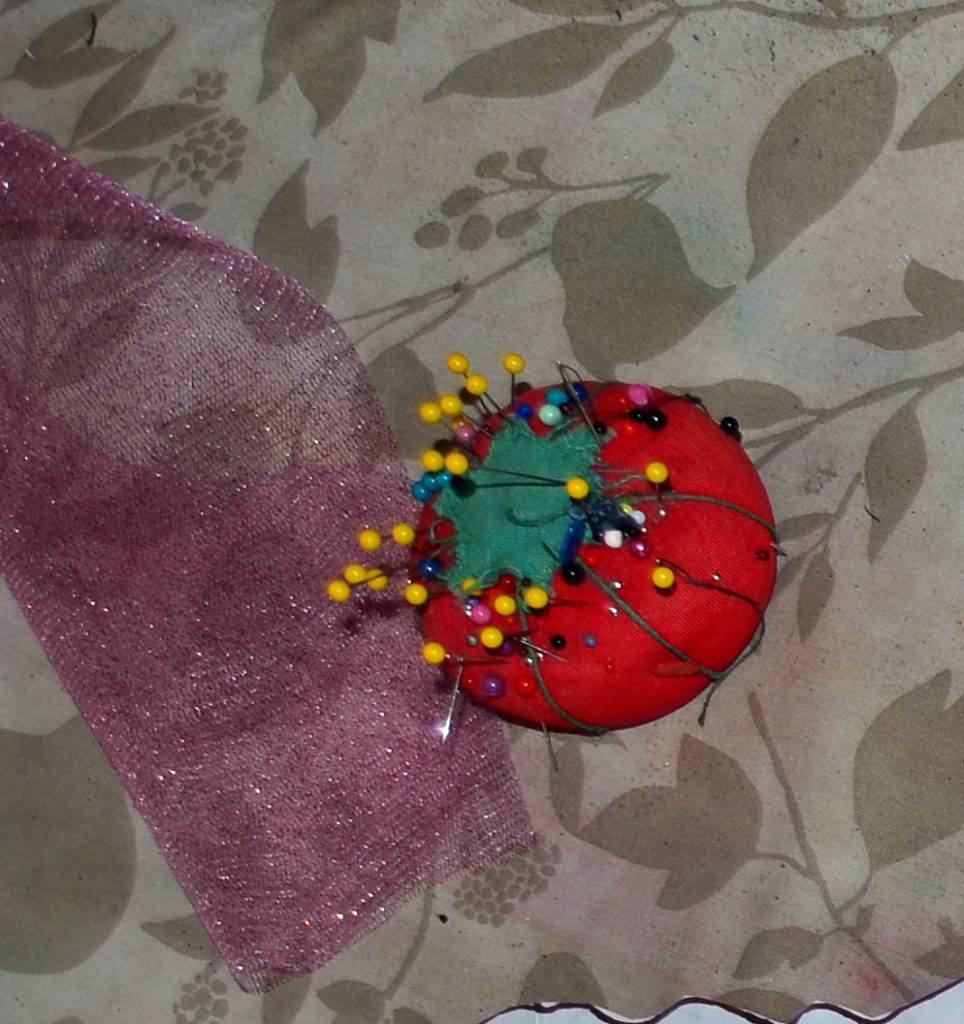
Out of reach until your kids understand why these are NOT toys! If you have indoor pets, never stop, because they can’t understand.
And finally – and maybe most importantly – make sure that you always close your rotary cutter after each use. This wonderful tool is a razor sharp knife that will cut through skin, flesh, and even bone as easily as it does through fabric.
Fold All Fabric Neatly Before Storing
Fabric takes up a lot of space and the more carefully you fold it, the less space it takes and the more you can stuff in. Also, I’ve found that it’s quicker and easier to iron out a few folding lines than it is dozens and dozens of stuffing wrinkles. If you’re really pressed for space, you can trying tightly rolling your larger fabric swatches, as well.
Either way, you’ll save time, material, and wear-and-tear on your leftover fabrics. It’s a win-win.
Sew-Zone Don’ts – Defensive Sewing Safety Tips
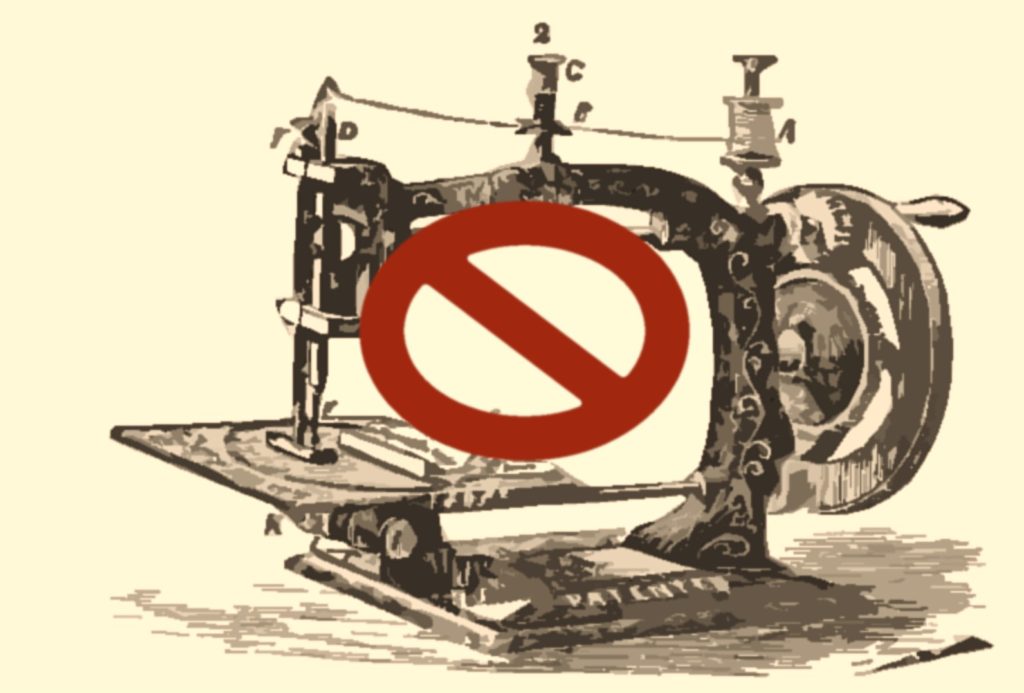
In some ways these are even more helpful than the do’s in our sewing safety tips and sew-zone protection list. “Do’s” can come and go with your space, the size and age of your family, and your sewing needs. But “don’ts” tend to stick around regardless of your circumstances!
Don’t Eat or Drink Anything in Your Zone
Stains are extremely unattractive and cleaning projects you’re working on is a pain. Get up and go get something if you want, but eat and drink somewhere else.
My one exception is a water bottle. This is basically a grown-up version of a sippy cup, and it keeps me from getting dehydrated, but since the little straw tube folds down, and I only keep water in it, chances of dumping or staining are minimal.
Don’t Bleed in Your Zone
Even the smallest pin-prick can leave a drop of blood on your project and blood stains look exactly like what they are. You have to clean them right away. Also, if a blood stain sets in, you can actually rip or fade out delicate fabrics when trying to scrub them clean…so take the time to get a Band-Aid.
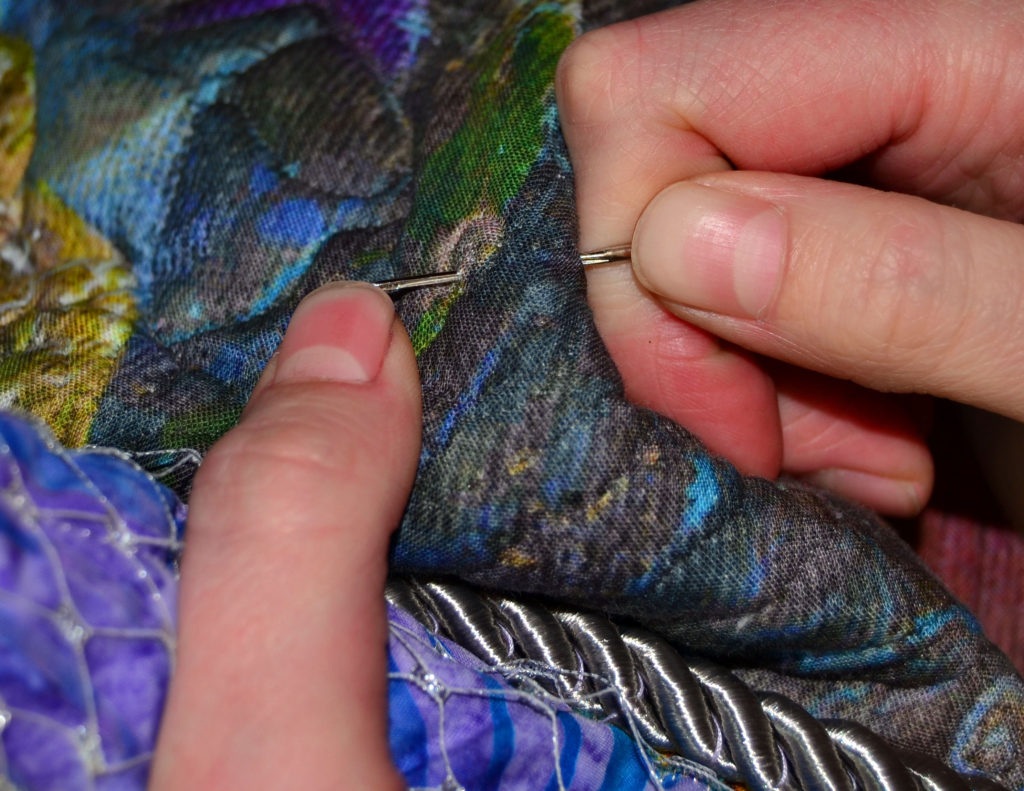
Don’t Sew When You’re Panicky or Pressed For Time
Trying to get something done within a certain time isn’t a bad idea, but rushing to meet deadlines, especially when you’re struggling with a certain technique will result in panic. And it will NOT end well. You’ll make mistakes and just have to rip it out later.
Don’t Sew When You’re Tired
You’ll end up with the same result.
Don’t Sew When You’re Angry
Again, for the same reason, especially if you’re mad at the person you’re sewing for. I once sewed a shirt collar in upside down in a shirt I was making for Michael because I was MAD at him for something…
Of course, I didn’t have enough fabric to make a new collar, and ended up having to throw the whole thing away. That was obviously all his fault – since I’m perfect. However, although I still get mad at him now and then, I don’t sew when I’m “P.O.ed.”

Don’t Leave Supplies Sitting in Strong Sunlight
Sunlight is both your best friend – since natural light is the best to work by – and also your worst enemy, since the sun can deteriorate things quickly.
I always sew in front of a window if I can because it helps me to see so much better BUT I always replace the cover on my machine to keep the sun off of it. This is especially true of fabric – fabric fades very quickly in sunlight.
Keep all fabrics hidden along with spray starch, basting spray and plastic scissor handles, really anything that’ll lose its moxy if left out in the sun too long.
Enjoy Your Sew-Zone!
I hope that this gives you an easy list of go-to sewing safety tips and ways to make your creative zone more peaceful, prosperous, and enjoyable. Fabric art should be about joy and experience, and the more you protect your space, the more you’ll enjoy it.
OK, enough with the joy. If you liked our article, or have some tips and tricks of your own, please drop us a line at our email: karyl@pybdesigns.com!
To the greater good of your quiltivity,
Karyl (aka Princess YellowBelly)
